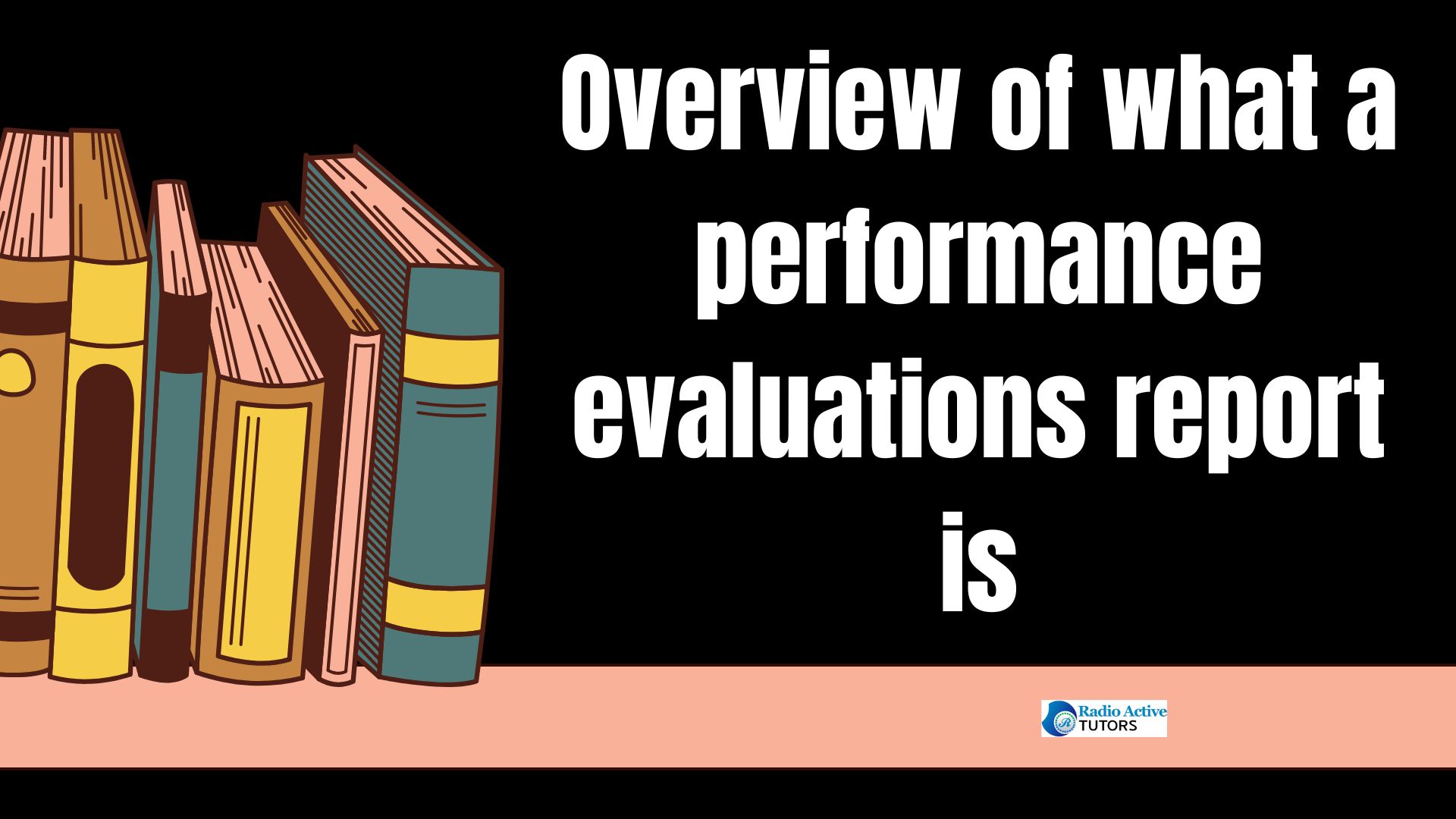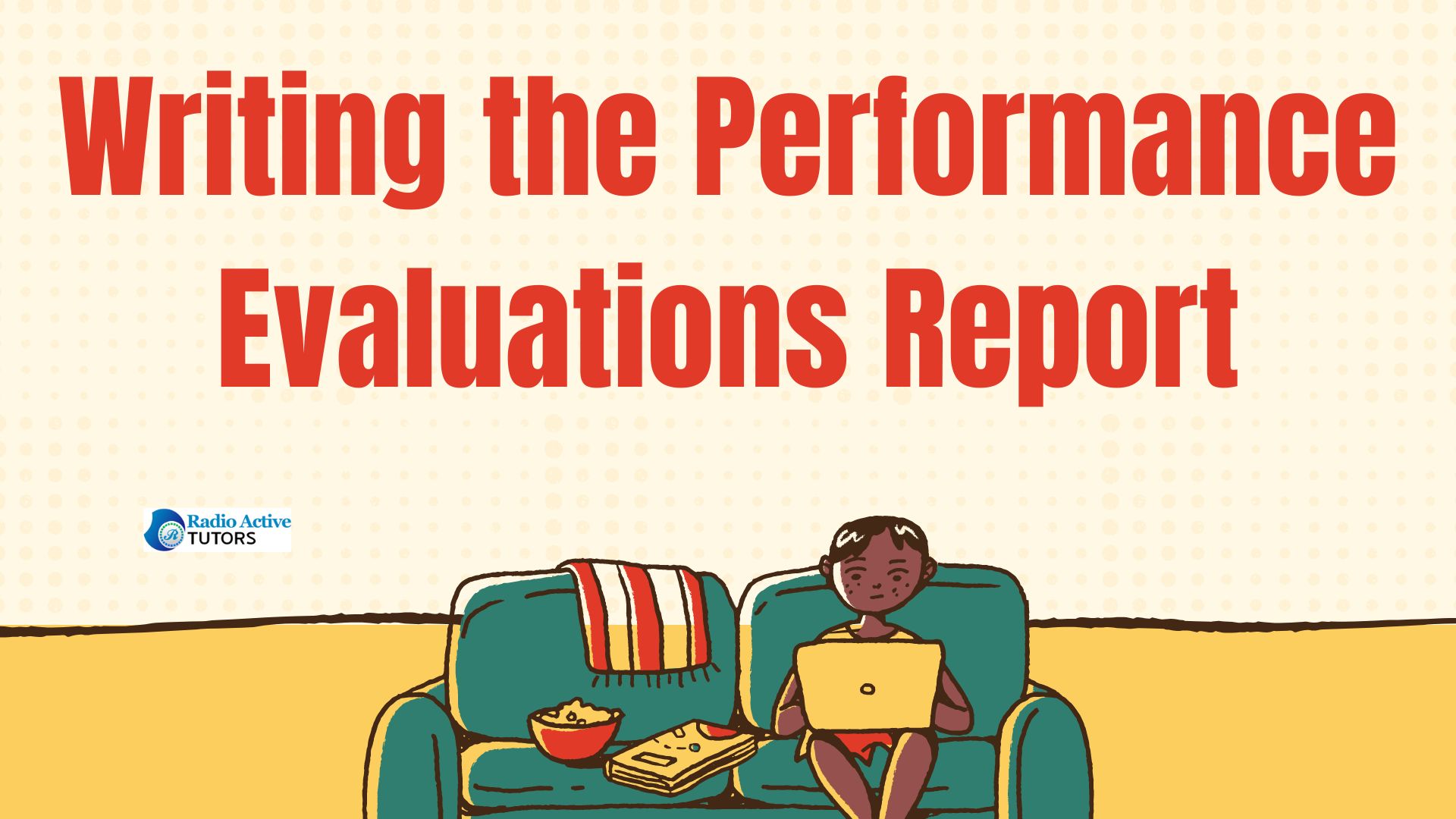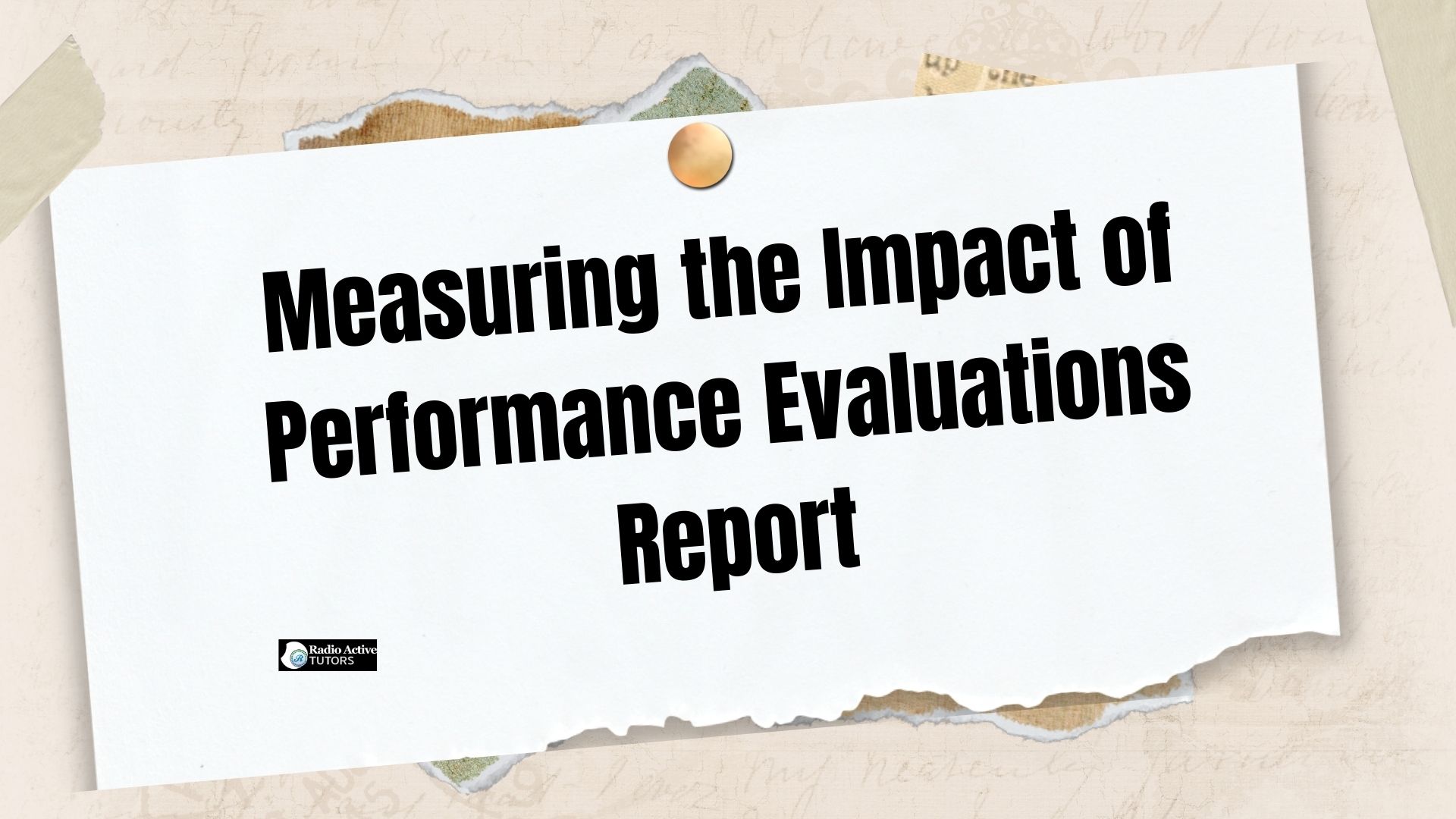Table of Contents
I. Introduction to Performance Evaluations Report
II. Key Components of a Performance Evaluations Report
III. Benefits of Conducting Performance Evaluations Report
IV. Types of Performance Evaluations Reports
V. Planning for a Performance Evaluations Report
VI. Writing the Performance Evaluations Report
VII. Maintaining Legal and Ethical Considerations
VIII. Measuring the Impact of Performance Evaluations Report
IX. Improving the Performance Evaluations report Process
X. Frequently Asked Questions (FAQs)
I. Introduction to Performance Evaluations Report
- Overview of what a performance evaluations report is

An overview of what a performance evaluations report entails is essential in understanding its purpose and significance in organizational assessments. A performance evaluations report comprehensively assesses an employee’s work performance over a specific period, providing insights into their accomplishments, strengths, and areas for improvement. It typically includes a summary of goals achieved, feedback from supervisors and peers, and an evaluation of key competencies and skills relevant to the role. This report serves as a critical tool for performance management, helping to inform decisions on promotions, bonuses, training needs, and career development plans.
- Importance of performance evaluations in organizations
The importance of performance evaluations in organizations cannot be overstated. These evaluations play a crucial role in providing feedback to employees about their work performance, which helps them understand their strengths and areas needing improvement. For organizations, performance evaluations aid in assessing employee contributions towards organizational goals, identifying high-performers for potential leadership roles, and understanding overall team dynamics. Additionally, these evaluations provide a structured approach for making decisions related to promotions, salary adjustments, and career development opportunities. By fostering a culture of continuous improvement and accountability, performance evaluations contribute to overall organizational success and employee satisfaction.
II. Key Components of a Performance Evaluations Report
An overview of the employee is a critical component of a performance evaluations report, offering a comprehensive summary of their professional journey within the organization. This section typically includes basic employee information such as their name, job title, department, and the period covered by the evaluation. It may also provide a brief overview of the employee’s role and responsibilities, outlining the context in which their performance is assessed. Additionally, this section often includes details about the employee’s tenure, previous evaluations, and any significant milestones or achievements during the evaluation period. This overview sets the stage for a deeper analysis of the employee’s performance and helps provide context to the evaluation process.
- Performance Against Goals
Performance against goals is a crucial component of a performance evaluations report, providing a clear assessment of how well an employee has achieved their objectives and targets. This section typically outlines the specific goals and objectives that were set for the employee at the beginning of the evaluation period. It assesses the extent to which these goals were met, exceeded, or fell short, and includes quantitative and qualitative measures of performance.
Evaluators often look at factors such as goal completion, quality of work, timeliness, and the impact of the employee’s contributions on the organization’s overall objectives. This analysis not only helps gauge the employee’s effectiveness in their role but also provides insights into their ability to set and accomplish meaningful goals aligned with organizational priorities.
- Strengths and Areas for Improvement
Strengths and areas for improvement are fundamental components of a performance evaluations report, offering a balanced view of an employee’s capabilities. This section highlights the employee’s notable strengths, such as specific skills, achievements, and positive behaviors that have positively impacted their performance and the organization. It also identifies areas where improvement is needed, such as skills to be developed, performance gaps, or areas where the employee could benefit from additional training or support. Evaluators typically provide constructive feedback and suggestions for growth to help the employee enhance their performance and reach their full potential. This section plays a crucial role in guiding the employee’s professional development and aligning their goals with the organization’s strategic objectives.
- Manager’s Comments and Observations
Manager’s comments and observations are a pivotal component of a performance evaluations report, providing valuable insights into the employee’s performance from a supervisor’s perspective. This section typically includes the manager’s assessment of the employee’s work habits, collaboration with team members, and adherence to company policies and procedures. It may also cover the employee’s communication skills, ability to meet deadlines, and overall attitude in the workplace.
Managers often provide specific examples to support their observations, highlighting both positive contributions and areas where improvement is needed. These comments help paint a comprehensive picture of the employee’s performance, ensuring that the evaluation is fair, balanced, and constructive. They also serve as a basis for discussing career development opportunities and setting goals for future performance.
III. Benefits of Conducting Performance Evaluations Report
- Improving employee performance

Improving employee performance is a significant benefit of conducting performance evaluations. These evaluations provide a structured opportunity for managers and employees to discuss strengths and areas for improvement, identify training needs, and set clear goals for the future. By establishing a continuous feedback loop, performance evaluations help employees understand their roles and responsibilities better, align their work with organizational goals, and develop professionally. They also promote accountability and motivate employees to strive for higher standards of performance. Additionally, performance evaluations contribute to a positive work environment by fostering open communication, trust, and collaboration between managers and their teams. Ultimately, improving employee performance through regular evaluations leads to increased productivity, enhanced job satisfaction, and overall organizational success.
- Setting clear expectations
Setting clear expectations is a crucial benefit of conducting performance evaluations. These evaluations provide a structured platform for managers to clarify job responsibilities, performance standards, and organizational goals to employees. By clearly outlining what is expected of them, employees gain a better understanding of how their work contributes to the overall success of the organization. Clear expectations help employees focus their efforts on tasks that align with strategic priorities, leading to improved performance and productivity.
Furthermore, when expectations are clearly communicated, employees are more likely to feel empowered and motivated to achieve their goals. Regular performance evaluations ensure that expectations are regularly reviewed and adjusted as needed, which helps to maintain alignment between individual and organizational objectives. Overall, setting clear expectations through performance evaluations promotes transparency, accountability, and a culture of continuous improvement within the organization.
- Identifying training needs
Identifying training needs is a significant benefit of conducting performance evaluations. These evaluations provide a structured opportunity for managers to assess the skills, knowledge, and competencies of their employees. By reviewing performance against goals and objectives, managers can identify areas where employees may benefit from additional training or professional development opportunities. This assessment helps ensure that employees have the necessary skills and resources to perform their jobs effectively and contribute to the organization’s success.
Addressing training needs through performance evaluations also supports career development and succession planning efforts, as it allows managers to nurture talent and prepare employees for future responsibilities. Ultimately, by identifying and addressing training needs, organizations can enhance employee capabilities, boost morale, and foster a culture of continuous learning and improvement.
Motivating employees is a key benefit of conducting performance evaluations. These evaluations provide a platform for managers to recognize and appreciate employees’ achievements, contributions, and strengths. By acknowledging employees’ hard work and successes, performance evaluations can boost morale and reinforce positive behaviors. Moreover, performance evaluations offer opportunities for managers to provide constructive feedback and set clear goals for improvement, which can inspire employees to strive for higher levels of performance.
When employees feel that their efforts are recognized and valued, they are more likely to be motivated and engaged in their work. This motivation can lead to increased productivity, improved job satisfaction, and lower turnover rates within the organization. Overall, performance evaluations play a crucial role in creating a positive work environment where employees feel motivated, supported, and encouraged to excel.
IV. Types of Performance Evaluations Reports
- Annual performance reviews
Annual performance reviews are a common type of performance evaluations report conducted by organizations to assess employees’ performance over a specific period, usually a year. These reviews serve as a comprehensive evaluation of an employee’s achievements, strengths, areas for improvement, and overall contribution to the organization’s goals. Annual performance reviews typically involve a formal meeting between the employee and their supervisor to discuss performance feedback, set goals for the upcoming year, and address any concerns or challenges. They provide a structured opportunity for managers to provide constructive feedback, recognize accomplishments, and discuss career development opportunities.
Annual performance reviews help align individual performance with organizational objectives, support decision-making related to promotions and salary adjustments, and contribute to a culture of continuous improvement within the organization.
- Project-based evaluations
Project-based evaluations are a specialized type of performance evaluations report that assesses an employee’s performance within the context of specific projects or assignments they have been involved in. These evaluations focus on the employee’s contributions, achievements, and effectiveness in completing project goals and objectives. Project-based evaluations often include feedback from project stakeholders, team members, and supervisors who have observed the employee’s performance firsthand. They provide a detailed assessment of the employee’s project management skills, problem-solving abilities, teamwork, and ability to meet deadlines and deliverables.
Project-based evaluations are valuable for identifying individual strengths and areas for improvement related to project work, as well as for recognizing exceptional performance and contributions to project success. They help organizations gauge the impact of employees’ work on specific projects and make informed decisions regarding future project assignments and career development opportunities.

Probationary assessments are a type of performance evaluations report conducted during an employee’s probationary period, which is typically a designated timeframe at the beginning of employment. These assessments serve to evaluate an employee’s performance, behavior, and suitability for the role and the organization. Probationary assessments often include feedback from supervisors and colleagues, focusing on the employee’s ability to learn and adapt to the job requirements, adhere to company policies, and integrate into the team.
They provide an opportunity for managers to identify any early performance issues, provide necessary guidance and support, and make informed decisions about the employee’s future within the organization. Probationary assessments are crucial for ensuring that new hires meet the organization’s expectations and standards, and they help establish a foundation for ongoing performance management and development.
V. Planning for a Performance Evaluations Report
- Setting evaluation criteria
Setting evaluation criteria is a foundational step in planning for a performance evaluations report. These criteria define the specific standards and metrics against which an employee’s performance will be assessed. Typically, evaluation criteria are aligned with the employee’s job responsibilities, organizational goals, and core competencies. They may include factors such as quality of work, productivity, teamwork, communication skills, problem-solving abilities, adherence to deadlines, and adherence to company policies and procedures.
Setting clear evaluation criteria ensures that the evaluation process is fair, consistent, and focused on the most relevant aspects of the employee’s performance. It provides a structured framework for managers to objectively evaluate performance and provide meaningful feedback to employees. Moreover, well-defined evaluation criteria help employees understand what is expected of them and facilitate constructive discussions about their performance during the evaluation process.
- Selecting the right evaluation method
Selecting the right evaluation method is a critical aspect of planning for a performance evaluations report. The evaluation method chosen should align with the organization’s goals, the nature of the work being evaluated, and the desired outcomes of the performance evaluation process. Common evaluation methods include self-assessments, supervisor assessments, peer reviews, 360-degree feedback, and objective measures such as key performance indicators (KPIs) or metrics. Each method has its strengths and considerations, such as the depth of feedback obtained, the reliability of the data collected, and the extent to which it captures different perspectives on an employee’s performance.
By selecting the appropriate evaluation method, organizations can ensure a comprehensive and accurate assessment of employee performance, leading to informed decision-making regarding career development, compensation, and performance improvement initiatives. Additionally, the chosen method should support the organization’s commitment to fairness, transparency, and employee development throughout the evaluation process
Establishing a timeline is a crucial aspect of planning for a performance evaluations report. A well-defined timeline ensures that the evaluation process is conducted efficiently and that all stakeholders are aware of key milestones and deadlines. The timeline typically includes important dates such as the start and end of the evaluation period, deadlines for submitting self-assessments and manager evaluations, and dates for performance review meetings. By establishing a clear timeline, organizations can manage the evaluation process effectively, provide sufficient time for meaningful feedback and reflection, and ensure that evaluations are completed in a timely manner.
Moreover, a structured timeline helps maintain consistency across the organization and allows for adjustments based on organizational needs or changes in priorities. Overall, establishing a timeline is essential for a smooth and successful performance evaluation process, facilitating constructive discussions and promoting accountability among managers and employees
VI. Writing the Performance Evaluations Report

- Structuring the report effectively
Structuring the report effectively is crucial when writing a performance evaluations report. A well-structured report ensures clarity and organization, making it easier for readers to understand and interpret the evaluation findings. Typically, the report begins with an introduction that provides an overview of the evaluation process and the employee being evaluated. The introduction is followed by sections that cover key components such as performance against goals, strengths and areas for improvement, manager’s comments and observations, and any other relevant feedback or assessments. Each section should be clearly labeled and organized logically, with headings and subheadings to guide the reader through the report.
It’s important to use clear and concise language, avoid jargon, and provide specific examples or evidence to support the evaluation ratings and comments. Finally, the report should conclude with a summary that highlights the main points and recommendations for the employee’s future development and performance improvement. A well-structured report ensures that the evaluation process is transparent, fair, and provides valuable insights for both the employee and the organization.
- Using clear and concise language
Using clear and concise language is essential when writing a performance evaluations report. Clear language ensures that the evaluation findings and feedback are easily understood by the employee, managers, and any other stakeholders who may review the report. Avoiding jargon and technical language helps to ensure that the evaluation is accessible to all readers, regardless of their level of expertise in the subject matter. When providing feedback on performance, it’s important to use specific examples and descriptive language to illustrate strengths and areas for improvement.
Clear language also helps to maintain transparency and build trust in the evaluation process, as employees can clearly understand the rationale behind their performance ratings and any recommendations for development. Overall, using clear and concise language in the performance evaluations report helps to effectively communicate the evaluation outcomes and support constructive dialogue between managers and employees.
- Including actionable recommendations
Including actionable recommendations is a crucial aspect of writing a performance evaluations report. These recommendations provide clear guidance for the employee on how to improve their performance and achieve their goals. Actionable recommendations should be specific, achievable, and directly related to the areas for improvement identified in the evaluation. They may include suggestions for skill development, additional training opportunities, mentoring or coaching, or specific projects or tasks to focus on. By including actionable recommendations, the report not only identifies areas where the employee can grow but also supports their professional development and career advancement.
Moreover, actionable recommendations help to align individual goals with organizational objectives, fostering a culture of continuous improvement and accountability within the organization. Overall, including actionable recommendations in the performance evaluations report ensures that the evaluation process contributes to the employee’s growth and success, benefiting both the individual and the organization as a whole.
VII. Maintaining Legal and Ethical Considerations
Maintaining legal and ethical considerations is paramount in the process of conducting performance evaluations. It is crucial to ensure that the evaluation process is fair, unbiased, and compliant with all relevant laws and organizational policies. Evaluators must adhere to principles of equal employment opportunity, avoiding any form of discrimination based on factors such as race, gender, age, religion, disability, or other protected characteristics. Confidentiality is also key, ensuring that sensitive information about an employee’s performance is handled securely and only shared with those who have a legitimate need to know.
Additionally, evaluators should base their assessments on objective criteria and documented evidence, rather than personal biases or hearsay. Providing constructive feedback in a respectful and professional manner is essential, focusing on behaviors and performance rather than personality traits. Overall, maintaining legal and ethical considerations in performance evaluations promotes a positive work environment, fosters trust between employees and management, and supports the organization’s commitment to fairness and integrity.
VIII. Measuring the Impact of Performance Evaluations Report

Measuring the impact of performance evaluations reports is crucial for organizations to assess the effectiveness of their performance management processes. By evaluating the outcomes and consequences of performance evaluations, organizations can determine how well their employees are meeting established goals and objectives. This assessment also allows organizations to identify areas where improvements can be made, as well as any potential opportunities for growth.
IX. Improving the Performance Evaluations report Process
Improving the performance evaluations report process is essential for organizations to ensure that evaluations are effective and valuable tools for both employees and the organization as a whole. This can be achieved by regularly reviewing and updating evaluation criteria to ensure they align with current job responsibilities and organizational goals. Providing training and guidance to managers and evaluators on how to conduct fair and objective evaluations is also important.
Additionally, seeking feedback from employees about the evaluation process and making adjustments based on that feedback can help improve transparency and trust. Implementing a clear and structured timeline for evaluations, along with using technology to streamline the process and maintain accurate records, can further enhance efficiency and effectiveness. Ultimately, continuous improvement of the performance evaluations report process supports employee development, promotes accountability, and contributes to overall organizational success.
X. Frequently Asked Questions (FAQs)
- What is the purpose of a performance evaluations report?
- How often should performance evaluations be conducted?
- What should be included in a performance evaluations report?
- How can I prepare for a performance evaluation?
- What are the benefits of conducting regular performance evaluations?
- How do you handle negative feedback during an evaluation?
- What legal considerations should be kept in mind when conducting evaluations?
- How should I document a performance evaluation?
- How can performance evaluations influence career development?
- How do performance evaluations impact employee morale?
